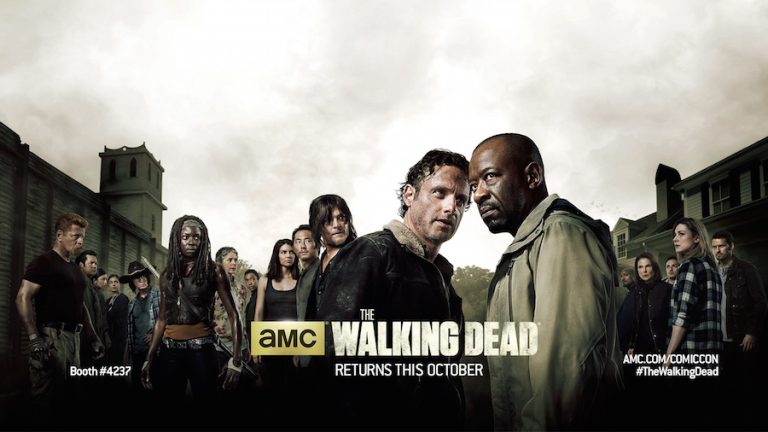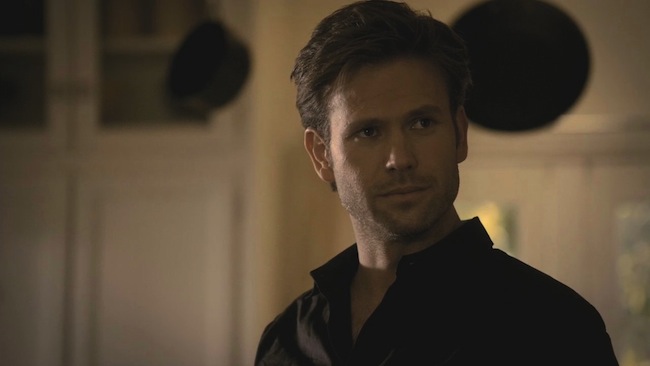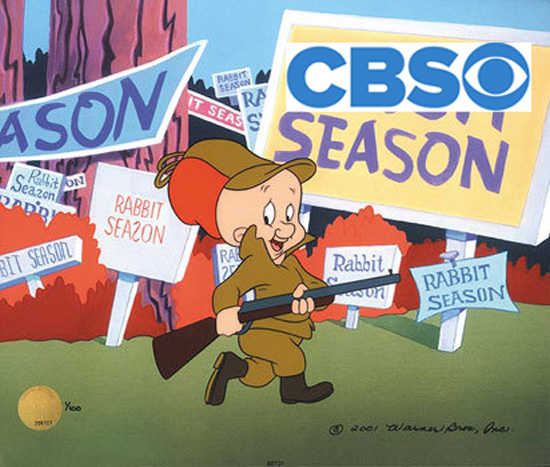
As the administrator of a very active Supernatural fan site, I started getting a lot of tweets from people on Monday telling me that we could change live ratings by tweeting about Supernatural three hours before and three hours after the premiere. All I had to do was use the #Supernatural of #SPN hashtag.
I’m a person who thrives on ratings news. I’m one of those statistical junkies that is still appalled to this day how Nielsen is not accurately counting television viewers and viewing trends. But still, from what I read about the new Twitter TV Ratings system, just implemented the week of 9/30 through 10/6, it wasn’t exactly going to affect live ratings. Or any ratings for that matter. It was just a new metric. A study of fan behavior.
There also seemed to be a lot of confusion as to how tweets would be counted, and considering a lot of Supernatural viewers are international, they were surprised to find their tweets wouldn’t be counted. Plus, what will this new Twitter system actually do? A few TV fandoms worldwide were jumping on this new bandwagon of tweeting for ratings and plenty of misinformation was being shared. Chances are these efforts will be in vain.
It’s my goal here to address in far better detail (Twitter really sucks when it comes to sharing detail) how this Nielsen TV Twitter Ratings System works and it’s possible role in the overall scheme of television.
What is the Nielsen TV Twitter Ratings System?
Simply put by Social Guide, the company that is compiling the data for this new system, “The Nielsen Twitter TV Rating will serve to complement Nielsen’s existing TV ratings, giving TV networks and advertisers the real-time metrics required to understand TV audience social activity. These ratings will build on top of NM Incite’s SocialGuide audience engagement analytics platform.”
Huh? Okay, how about this: “Without a measurement of the audience of people who view those Tweets, TV networks, advertisers and agencies were left wondering about the true reach and influence of TV-related activity. Nielsen Twitter TV Ratings complete the picture by measuring both Twitter TV-specific activity (Authors, Tweets) and reach (Unique Audience, Impressions).”
Still not doing it for you, huh? Let’s break it down. There’s a few key words in the first statement from Social Guide. “Complement” for one. That means that Twitter use will be one of the many metrics used to measure the performance of a TV show. “Understand TV audience social activity” also stands out. The theory is that the more tweeting that happens about a show before and after airtime, the bigger that show’s ratings will be. That could be true. However, if a show ranks high on the Twitter ratings list, will this mean the show is spared from cancellation or will now get more money from advertisers? No.
How relevant is the Nielsen TV Twitter Ratings System?
Depends who you ask. To TV broadcast networks and their parent companies, not relevant at all. Measuring tweets is not a reliable, quantitative way of knowing who’s actually watching a TV program live. The bottom line is, and always has been, shows exist because of money. When the decision comes around whether or not to cancel a show, often ratings isn’t the only variable. Most of the time it’s whether the show is making money for the network and/or parent studio.
Often times (especially in the case of The CW), the network and the studio have the same corporate parent. If the network is losing money but the studio is making money on a show, as long as profit offsets losses for the parent, that show is looking favorable. Sure, it might end up in a Friday dead zone if the ratings don’t add up, but it will go on. If a network is looking at a marginal show and sees that it’s popular on Twitter, but it costs too much and isn’t making a profit, Twitter just isn’t going to matter. It’s cancelled.
To online social marketers, the Twitter TV Ratings is huge. It’s the greatest thing since sliced bread. They now have a new tool for targeting PR campaigns and generating buzz for a TV show. They know who the relevant players are in Twitter and how to energize a fandom. This could result in a live ratings increase for a TV show. The problem is, those increases are marginal right now and not very well understood.
Why track ratings at all?
Well, you’ve got to understand why ratings are tracked in the first place. Historically, ratings has never been about how many people are actually watching a TV show. The motives are murkier than that. The TV Ratings system started years ago by Nielsen when television transitioned from radio was created for the purpose of telling advertisers how many people are watching a certain TV show and eventually evolved to which type of demographic groups they belong. That way, if a nighttime soap opera had a huge female audience and you were a seller of ladies underwear, then you knew which show to air your advertisements.
Because shows were aired over TV towers that couldn’t track signals, it was impossible to track how many people were picking up those signals and truly watching. Nielsen, a ratings monopoly hired by TV networks, came up with a sampling system. Various households would be chosen at various times as “Nielsen” families. They would tell Nielsen what shows they watched and when. Nielsen would compile those responses and calculate an approximate ratings number of how many people were watching a show by multiplying the average sample percentages by total number of households and assigning each show a ratings share. It also helped that there were only three major broadcast networks to measure. The list of programs was a lot shorter back in those days.
TV Broadcast networks, who make almost all their money from ads, would take these ratings numbers compiled by Nielsen to the advertisers and charge ad prices based on the popularity of a show. They would command a premium on the top rated shows. The low rated shows would suffer that very painful label of “cancelled.”
Since everything is all digital now, and most viewers are watching TV through cable boxes and satellite receivers, Nielsen is now doing digital set boxes to track ratings. However, that’s still only a sampling of households, so instead of taking their ratings from paper journals, they’re now using something more sophisticated and getting their data digitally. These boxes are not only tracking what shows people are watching, but viewing habits. So if Dad got fed up with the first ten minutes of Once Upon A Time and turned on the football game, Nielsen would know it.
In the 2000‘s, TiVo boxes and DVRs became all the craze and the age of “time shifted” viewing became relevant. This wasn’t a new phenomenon really since the same sort of thing happened with Video Cassette Recorders in the 1980‘s. Back then, when overall shares began to plummet because VCR recordings weren’t tracked, networks got creative and started digging for more sampling of demographics. Suddenly, various groups like women aged 18-34 became more lucrative. The coveted demo factor became 18-49, and that is the most important metric in ratings tracking for advertisers at this time. Once upon a time, it was only total number of households watching that mattered (of course those households usually only had one TV set).
DVRs though, because of their technology, made “time shifted” viewing so much easier. If a show ran late because of a sporting event, or had a special night and time airing, or the viewer wanted to also record repeats, the DVR would catch that. Whenever a show airs, it records it. That’s something the VCR could never do. Suddenly people, especially younger viewers, weren’t watching TV shows when they actually aired because the DVR was so reliable. They were watching the recording later. Oh, and they were skipping over the commercials.
Around 2005, Nielsen started tracking DVR ratings. At first DVR ratings weren’t counted in ratings at all, but eventually (it took a few years) as DVR usage grew enough where playback on the same day as the episode aired was counted in that day’s ratings. Networks have tried hard to get all DVR numbers to be included when determining ad rates, but the advertisers have resisted. They want to know the true live number and that people weren’t skipping over the commercials. Because DVR penetration is now 46% of US homes, advertisers are now at least considering C3 ratings, which is live ratings plus DVR playback in three days. DVR+7, while becoming a great PR metric for networks, is not counted in numbers for advertisers, even though it’s a more accurate count for overall ratings. A lot of shows are seeing gains in viewership of 50% or more when DVR+7 is factored.
All of this got even more complicated by online and video on demand viewing, as well as cable channels starting to offer original programming. Hulu was created to get people to watch TV online, but networks had to start sharing their current TV shows online on their websites so people who missed episodes and didn’t DVR them would still continue to watch (this is especially true for serialized shows). These shows were first aired without commercials, but networks quickly realized that not only were they missing out on a potential revenue stream, but people would watch online more if they didn’t get commercials. Once ads were worked into online viewing, the price charged for ads was still far less than what a network could get for airing an ad live on their network. Online viewing may be becoming more popular, but it’s still a fraction of the overall viewing.
Then there’s iTunes, who sells shows to people without commercials for a low price per episode. None of that revenue goes to the actual network of the show. A small part of that revenue (20 cents on the dollar) goes to the studio that produces the show. The same is true for the lucrative market of international syndication. Studios are majorly cashing in on international distribution, often offsetting productions losses immediately. That, is a whole other tutorial though.
(Here’s two articles I’ve done in the past that cover that point in great detail:
What are the actual viewers?
When all this alternative viewing started happening, traditional ratings started to plummet. It wasn’t that people weren’t watching TV, they just weren’t watching at air times anymore. Suddenly the antiquated system that was never really quite right to begin with was even more antiquated and inaccurate. However, the traditional system remains because, the whole purpose of sampling was for ad dollars. It could be argued the overall numbers might be off, but the percentages and popularity of shows are the same.
Still, there are those that think an actual accurate count of viewers is important. This demand has been spurned by low rated broadcast networks and cable networks hoping to get a bigger piece of the advertising revenue pie. The demand has also come from fans of low rated shows that are hoping for alternate numbers that would support their “Save Our Show” campaigns. The problem is, Nielsen and high rated networks are still happy compiling numbers for an antiquated advertising system because it works in their favor.
Other companies outside of Nielsen (a monopoly) have come along to help networks and others determine what is the true number of viewers watching a show. The low rated CW for example, believes that their viewership is being undercounted by 20 percent thanks to studies by other measurement companies. The question is though, if The CW is undercounted by 20 percent, are all other networks being understated by the same amount? The CW also knows that their shows are watched 30 percent of the time online. While that might be higher than other networks, it’s still not translating into large advertising dollars. If that isn’t translating into dollars, how can Twitter cash in?
A Ratings Case Study
Tracking Twitter metrics also only shows one aspect of social media. There is still not a ratings list that combines Live and Same Day DVR viewing, DVR +3, DVR +7, Video on Demand, online viewing on Hulu and TV network sites, and iTunes purchases. There’s also the bit torrent illegal downloading, but that’s more of a bragging feature than money maker.
Here’s something fun that Fox just put out about their fall hit, Sleepy Hollow. For the premiere on 9/16/2013, Nielsen ratings showed that 12.70 million people watched the premiere. According to this chart by Fox, it was really 25 million.

So what about Twitter metrics? How would that fit into an overall chart like this? It doesn’t change that overall bottom line number. That would remain at 25 million. The key here would be, how much of that 25 million can be tracked back to Twitter activity? Let’s go with that bare basic metric of a 1% ratings increase due to an 8.5 percent increase in Twitter volume. That number can only be tied to live airings, since the Twitter measurement is tweet activity 3 hours before and 3 hours after a program airs. So, the 12.70 million of the initial premiere is really all that’s in play here. Sure, we could consider the 4.59 million for the repeat, but chances are Twitter activity comes up negligible for a Friday repeat and do not produce measurable results. So, going with this logic, 127,000 of that 25 million can potentially be tied to Twitter.
Sleepy Hollow didn’t register on the top ten list though, so it could be that 127,000 is generous. Or not accurate at all. The show that did get the highest amount of tweets was ABC’s Scandal. According to the statistics, the unique audience on Twitter for the October 3rd premiere was 3,655,200 million, impressions was 38,434,300 million, unique authors was 178,500, and number of tweets was 712,900 (balancing an 80/20 weighting of unique tweets vs. retweets). Scandal opened to a series high 3.6 in the 18-49 demo and 10.51 million viewers.
How much of that can Twitter take credit for based on those numbers? Honestly, I have no idea. That’s the problem. I’m not sure anyone else does. How can Twitter activity be quantified in a way that will garner ad revenue for the network? It seems to me, any potential revenue that comes from this will be for Twitter’s benefit. This tells us that Twitter will be used more as a PR medium by ABC Publicity and ABC Studios (the production studio for Scandal) than other shows that didn’t show up on that list. Chances are very good Twitter did help boost those numbers. But Twitter so far has been a free advertising medium used by social marketers. Will this inspire networks to actually start paying Twitter for promotion?
The other big flaw with this system is tracking only applies to English speaking networks in the U.S. The one thing about social media, especially Twitter, is it connects and unifies international audiences. A lot of US TV shows are distributed at high profit internationally, so a lot of noise on Twitter and social media about a show is not US based. Advertisers only want to know US viewers, so often Twitter metrics are inflated. Social Guide is weeding out the international community, but that risks eliminating a lot of buzz about a show that twitter traditionally generates.
It just doesn’t seem to come across as a true ratings system, does it?
Twitter TV Ratings Still Have a Purpose
Twitter started the Nielsen Ratings System for one main purpose – To get a piece of that revenue pie when it comes to big TV deals. TV is a very lucrative business and Twitter, despite it’s popularity, still doesn’t make a profit. Proving to networks that Twitter can be a reliable marketing device to boost a show’s numbers will very likely send some dollars their way. Given their influence, it’s not an unfair attempt.
But what about Nielsen? They’re the authorities! Owning Social Guide and doing this metric means that they must consider Twitter activity to be serious. Nielsen only does what they’re hired to do. They’re paid by broadcast networks, and in the case, they’re being paid by Twitter. So no, they’re not doing this measurement out of the goodness of their heart. That’s why the traditional ratings system is still in place.
There’s been a big resistance to embrace social media as a marketing and promotional tools by The Powers That Be (TPTB) in entertainment. They’re slowing coming around, but Twitter had to come up with a way to prove that chatter about a show wasn’t just a bunch of fan girls having their squee. The intent is for Twitter to send a strong message to TV studios, networks, and marketers. They have influence.
Social media is more and more playing a big role is getting people to watch a TV show live, and so far it’s been great free publicity. However, the message has been in control of the fans. This is the sounding board and chance for fans to share their love and get the word out about their favorite show.
Marketers get a little scared when they can’t control the message, but they’re realizing that because of social media like Twitter, Instagram, Tumblr, Facebook, etc, it can’t be ignored and they’re missing out on a major opportunity. With all the options for television now, on networks, cable, online, etc, it’s getting much harder to get attention for a program, let alone when it airs. So, it may be that paying Twitter and other social media outlets is the way they shift marketing dollars. But still, there will be plenty of resistance by networks for a while to play into Twitter’s efforts. Why buy a cow when you can get the milk for free? Change is on the horizon, but it’s going to be slow.
What Does This All Mean?
Measuring tweets for a TV show is not a bad thing, especially when you’re part of a fan base that’s been dying to get your show some attention. However, it’s just one small part of understanding the radically changing viewing landscape. However, no Twitter figures can be reliably tied to the success of a TV show.
For example. The top rated TV show for last week was Sunday Night Football. I’m pretty certain people were on Twitter discussing the game, but chances are they weren’t using their #SNF hashtag. That’s not on the Twitter list anywhere. Neither is number two, NCIS, which my parents religiously watch, but they don’t know what a tweet is if it smacked them in the forehead. This Twitter list exists in just identifying another segment that may or may not help networks and studios squeeze a few more advertising dollars out of sponsors.
There are probably not going to be marketing campaigns targeted to NCIS viewers on Twitter, but Scandal is likely to get some attention. Considering Scandal is one of ABC’s top rated shows though, this extra Twitter attention really isn’t going to do much for them come renewal decision time. Eventually, being high on this list could convince advertisers to pay a little more for a show at Upfronts, but chances are higher the advertisers will to go to Twitter to reach these viewers and bypass the network. Renewal on the network side all boils down to the question, “Is the show making money?”
The rise of social media and other platforms is not being counted and there is hope eventually tracking of those numbers will result in new ad revenue streams. However, it takes years to get such systems in place and there’s no guarantee they’ll result in any big changes or more dollars compared to the old system. It definitely won’t change the way ratings are counted.
Come next Tuesday, when Supernatural airs, I’m still going to encourage fans to tweet about the show. I’m not going to do it though to get a high Nielsen Twitter TV Ratings ranking though. I’m going to do it because I love my show and it deserves all the buzz it can get. That should be the true motivation of any TV fan engaged in Twitter, Tumblr, Facebook, or whatever gets the chatter going. The rest is just details.
Additional Sources
http://www.nielsen.com/us/en/press-room/2012/nielsen-and-twitter-establish-social-tv-rating.html
http://defamer.gawker.com/nielsens-new-twitter-tv-ratings-are-a-total-scam-here-1442214842






I thought I read somewhere that part of what they’re trying to measure is whether or not the volume of twitter activity can be correlated to a bump in live viewing. In other words, the chatter of peers encourages people to watch live — which is the advertisers favorite thing.
But it occurs to me that, we tend to tweet DURING the commercials, don’t we? Which, from the advertisers standpoint, is a Bad Thing, right?
Twitter and other social media to me seem to be more a measure of viewer engagement than absolute viewer numbers. I understand that some advertisers look for that type of viewer engagement so the Twitter metrics will be of some interest to them. Of course Twitter itself would love to have it officially correlated that x amount of Twitter activity= x bump in ratings. Somebody somewhere will make money from it if it turns out to be true that Twitter activity can affect live ratings.
If I set my Twitter location to US (I did), do I count in the rating, or does it go only by IP?
That’s a great question! It’s not as easy as it looks. A lot of people don’t put location on their Twitter so they have other algorithms for tracking location. They look at your tweets. Foursquare check in tweets are used for example, or other indicators that you are in the US. Just putting your location as US won’t cut it. Granted, I’m not sure how deep the actual Twitter ratings algorithm goes, but they know that just the location setting isn’t the most accurate. One way to assure your tweet gets counted? Retweet a tweet from someone in the US.